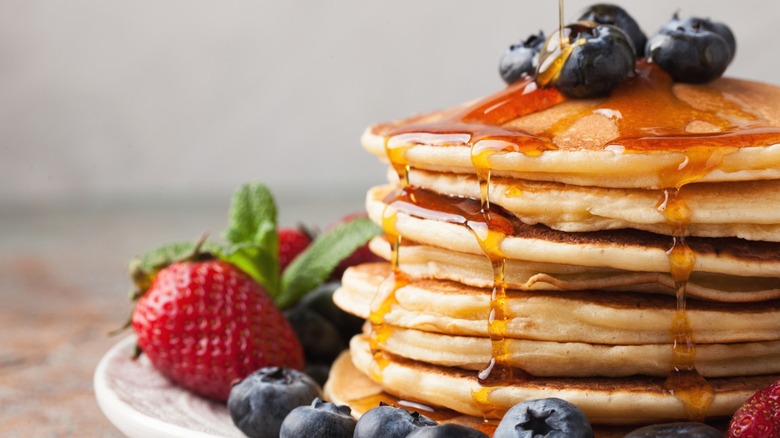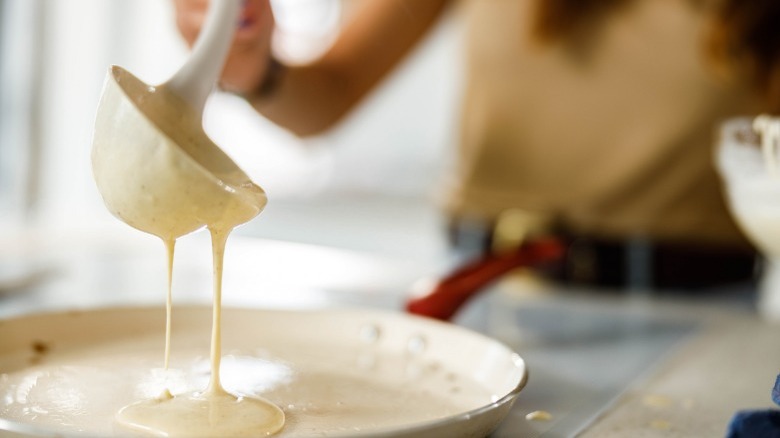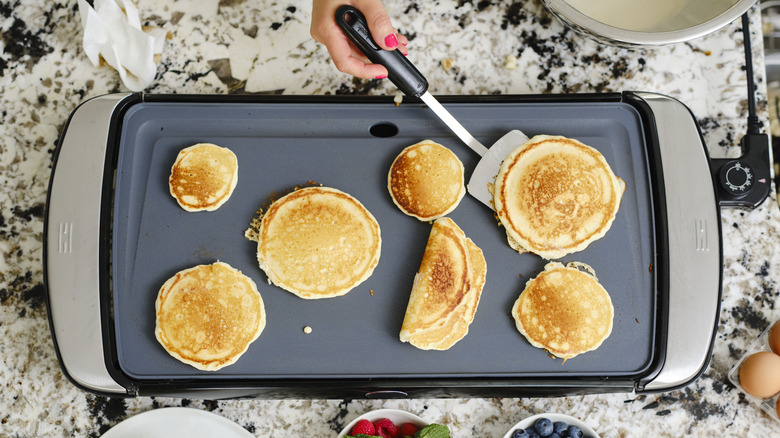The Batter Mistake That Kills Fluffy Pancakes
The perfect pancakes are tall, fluffy, and dripping with maple syrup and butter. Pancakes usually turn out this way pretty consistently when you're eating out, but if you happen to be doing the mixing, pouring, and flipping, you know how easy it is for your flapjacks to come out less than perfect. It turns out that the biggest mistake you could be making is not letting your batter rest before you start pouring.
Pancake mixes generally have baking powder or some other kind of raising ingredient in them. The key to getting the fluffiest pancakes possible is letting your batter sit for 10 to 15 minutes after it's mixed so that the baking powder has enough time to activate. If you don't let the batter rest, it could be thin and lead to flat flapjacks simply because your leavening agent and reactive agent haven't yet had the chance to do their science magic.
The science behind leavening agents like baking powder
So why do pancakes even need baking powder in the first place? Baking powder, like yeast and baking soda, is a leavening agent, which means that it helps whatever it's added to raise. The leavening occurs when the powder comes into contact with any acid (think salt or yogurt) and carbon dioxide is released, prompting the expansion to begin. Once the batter or dough is put in the oven (or cooked on the stove, as is the case with pancakes), the proteins within it trap the carbon dioxide bubbles in the final product — this is how we get airy cakes or fluffy pancakes.
There's a whole lot of science that goes into keeping your baking powder as fresh and effective as possible as well. Baking powders usually have cornstarch or some other kind of filler in them in order to keep the powder from getting clumpy and prevent it from prematurely reacting. If it were to react before it hits your bowl, it would start releasing carbon dioxide and might not work as well. Unopened, baking powder should stay fresh for six months, but if it's been opened, it'll only be its most effective for around three months — make sure to replace it periodically if you want it to do its job.
Back to splattering — here's how to avoid that too
So you've let your batter sit to get the lightest and fluffiest pancakes possible but are met with disaster when it comes time to flip each flapjack — what gives? It turns out that you could take all the right precautions and make the most perfect batter ever, but if your flipping technique is sub-par, your half-cooked pancakes might still create a splash. The key to flipping your cakes perfectly is all in the placement of your fingers.
You might think that grabbing the spatula and flipping your pancakes as quickly as you can is the way to go, but there is another method that minimizes the risk of a messy breakfast. Hold the spatula with your pointer finger and thumb, and then twist these fingers to gently flip the spatula and the pancake. Using your whole hand and wrist is too powerful, which is why your batter may spill outside of the perfect circle you worked so hard for.



